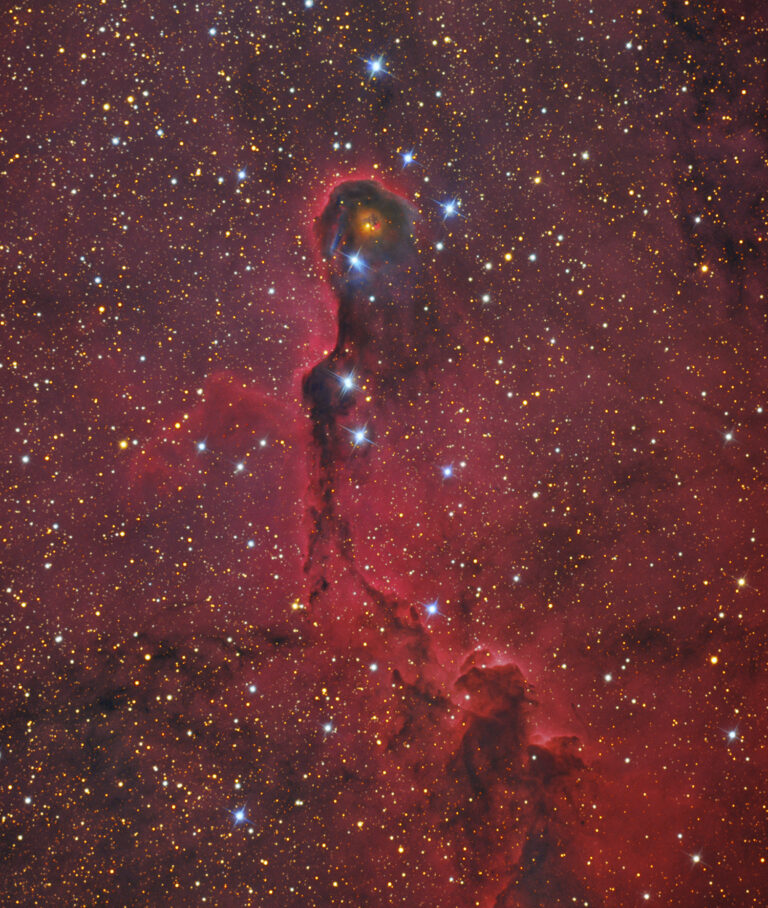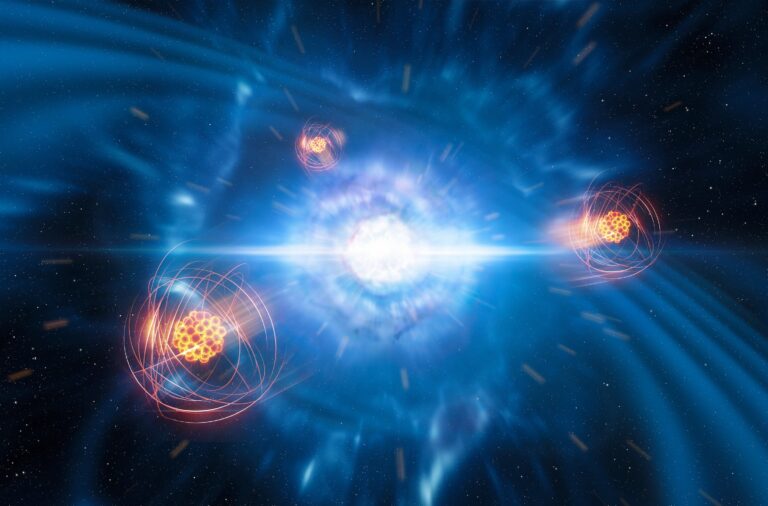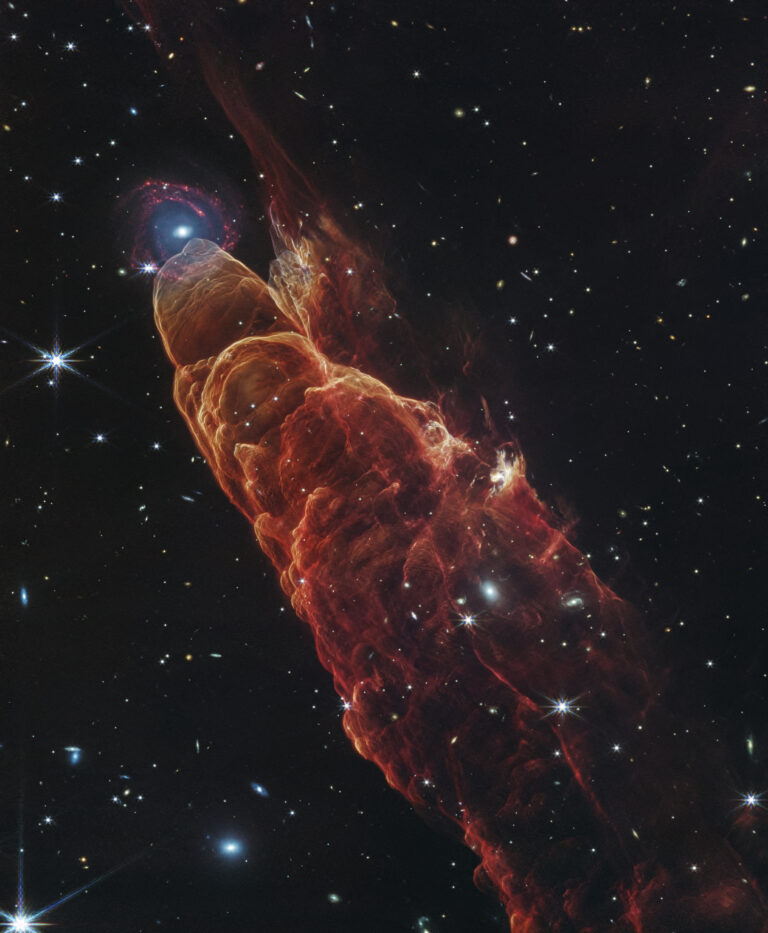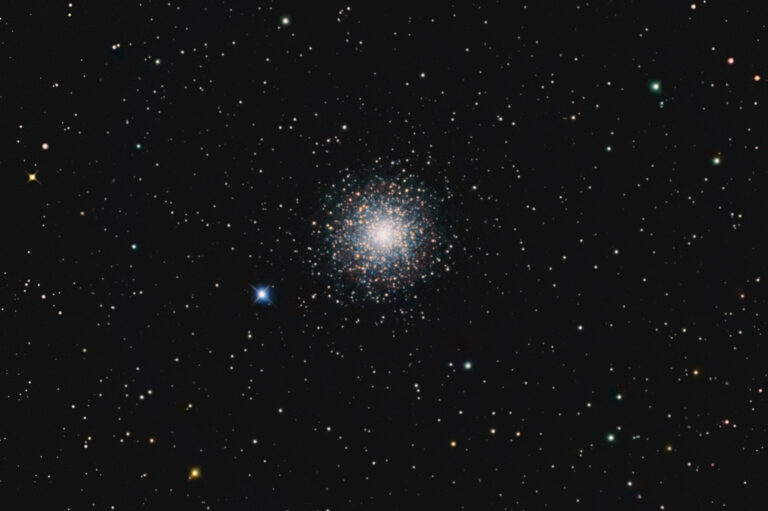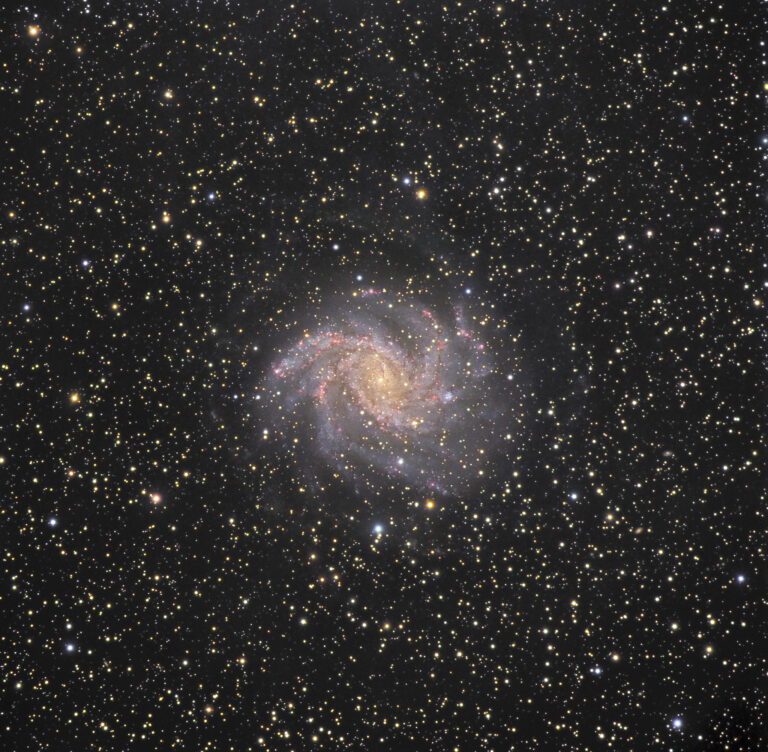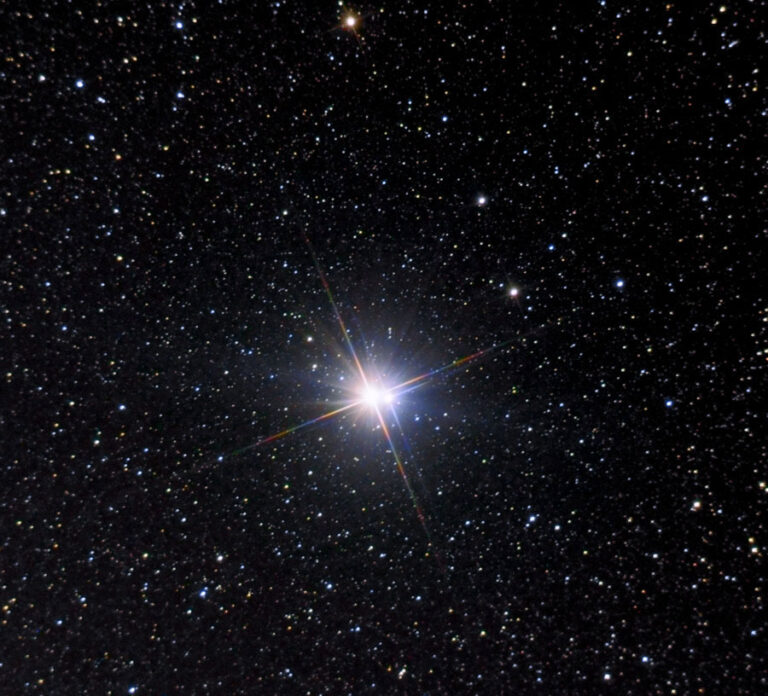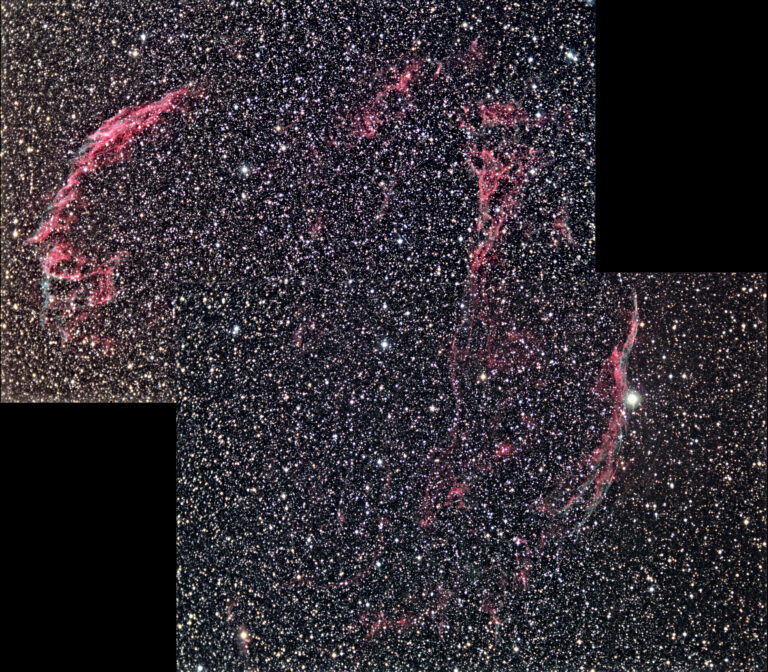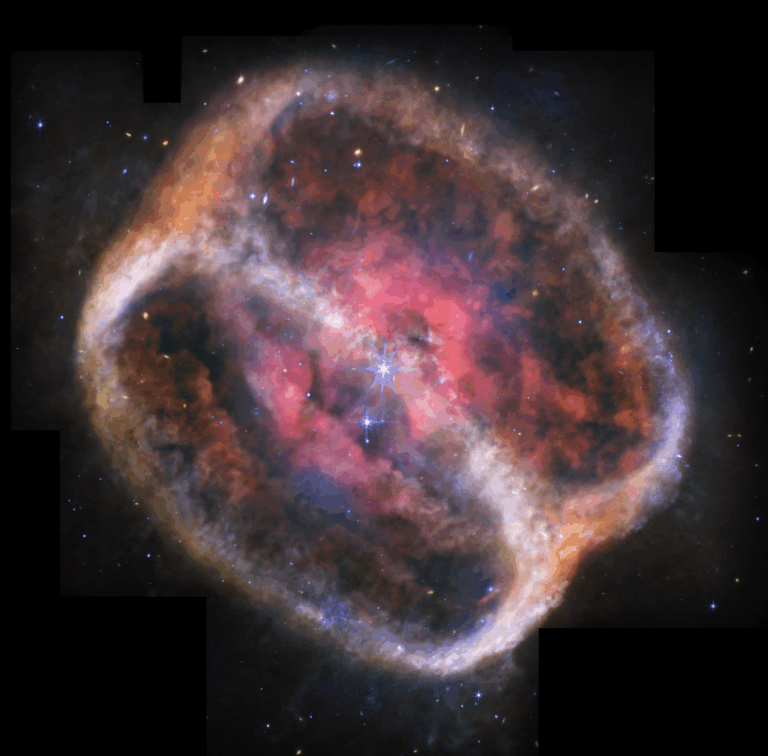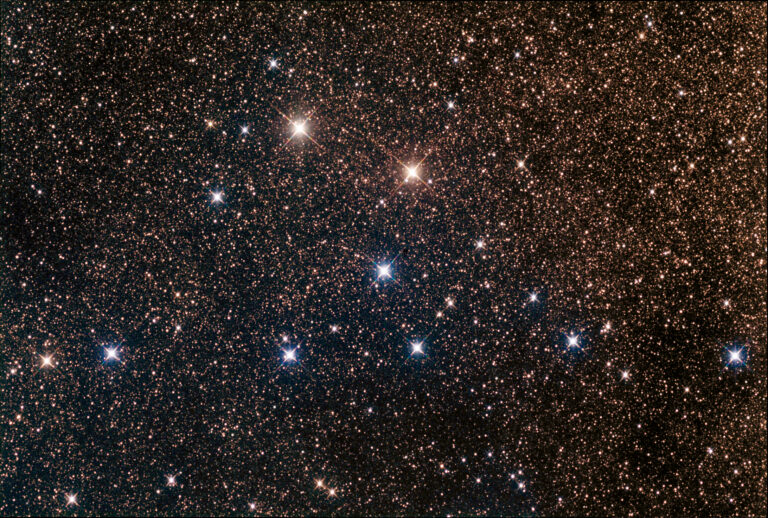Key Takeaways:
Most stars with masses similar to that of our Sun will end their lives as white dwarfs — small, dense, hot bodies that slowly cool down over billions of years. On the way to this final phase of their lives, the stars throw their atmospheres out into space and create planetary nebulae, colorful glowing clouds of gas surrounding the small, bright stellar relics.
This image, captured by ESO’s VLT, shows the remarkably round planetary nebula Abell 33, located some 1,500 light-years from Earth. Being perfectly round is uncommon for these objects — usually something disturbs the symmetry and causes the planetary nebula to display irregular shapes.
The strikingly bright star located along the rim of the nebula creates a beautiful illusion in this VLT image. This is just a chance alignment: The star, named HD 83535, lies in the foreground of the nebula about halfway between Earth and Abell 33 in just the right place to make this view even more beautiful. Together, HD 83535 and Abell 33 create a sparkling diamond ring.
The remnant of Abell 33’s progenitor star, on its way to becoming a white dwarf, is visible just slightly off-center inside the nebula as a tiny white pearl. It is still bright — more luminous than our Sun — and emits enough ultraviolet radiation to make the bubble of expelled atmosphere glow.


